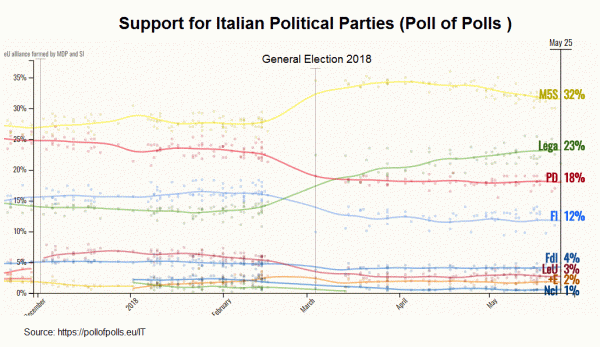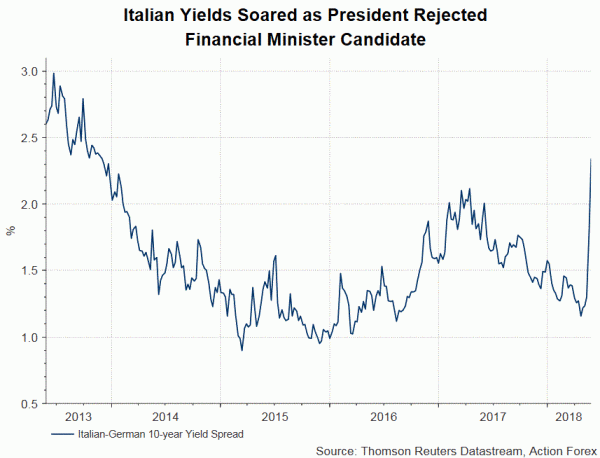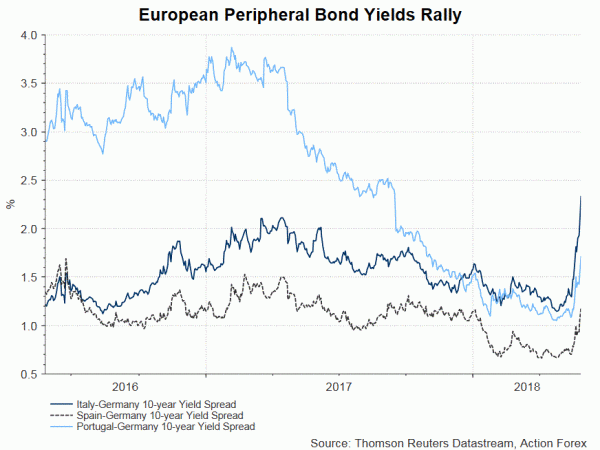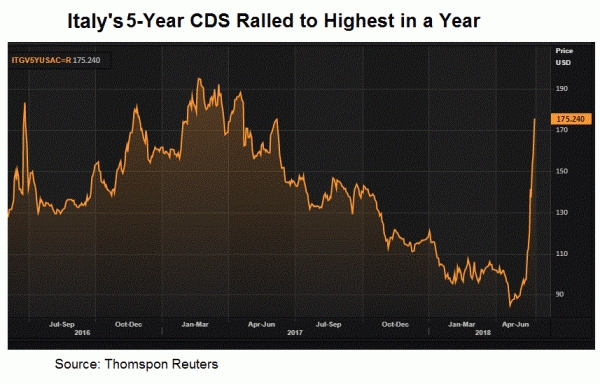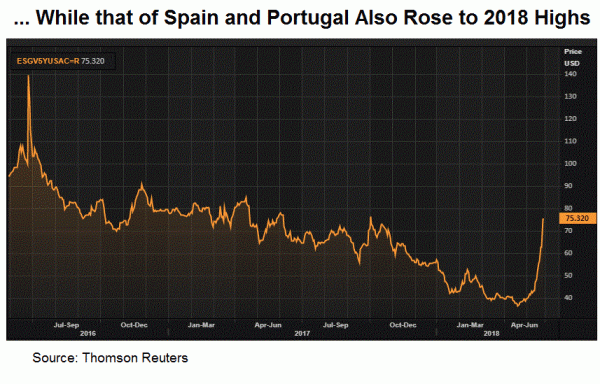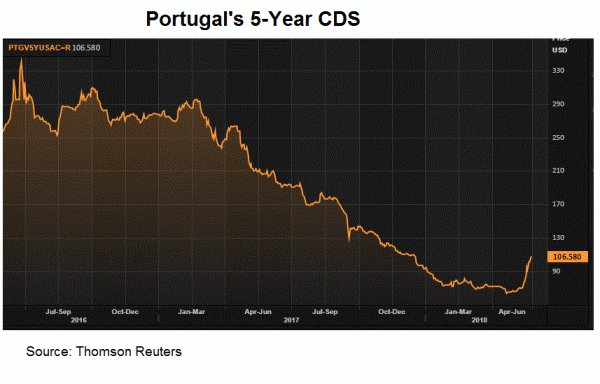(Updated on 0230 GMT, May 30) 10-year Italy-Germany yield spread jumped further to 2.83%, highest since 2013, on May 29.
Hopes of forming a populist coalition government in Italy hit the rocks as President Sergio Mattarella rejected eurosceptic Paolo Savona’s nomination as the next finance minister. Yet, he has invited Carlo Cottarelli, a former IMF official, to take the post of the prime minister and form an interim technocrat government that would lead the country to new elections. Giuseppe Conte, the prime minister-designate, quitted after the President’s veto. Euro initially jumped but gains were erased later in the day with EURUSD plunging to the lowest level since November 9, 2017. Italian bonds plummeted, lifting yields. The 10-year Italy-Germany yield spread widened to 2.34%, a level not seen since early February 2014, on Monday. It was remarkable jump from 2.05% last Friday. With both the UK and US closed for public holidays on Monday, the repercussion of the stalemate remains to be seen. What is certain is that the euro and Eurozone’s financial markets (peripherals in particular) would face huge volatility as we head to the new election.
President Mattarella’s decision has by no means helped alleviate the political turmoil. In his proposal, new elections would be held after the approval of the 2019 government budget, probably at the end of this year or the start of next year. However, a technocrat government would need approval from both houses of the parliament. Cottarelli, known as “Mr Scissors” for his cuts to the country’s public spending in the past, would hardly win a vote of confidence in a parliament controlled by Five Star Movement (M5S) and the League (LN), the populist duo failing to form the coalition government. In this case, new elections would have to take place much earlier, say, around the end of the summer.
Worse still, new elections do not seem to be a way to resolving the current stalemate. Opinion polls indicate that support for LN has soared since the March election. Poll of polls has shown that as of May 25, support for the party has risen to 23%, compared with the 17% of votes the party secured at the March election. Support for M5S has stayed largely unchanged at 32%. Concerning other major parties, supports for the Democratic Party (PD) and Forza Italy (FI) came in at 18% and 12%, compared with 19% and 14%, respectively, at the March election. This signals that new elections would likely again result in a hung parliament and require M5S and LN to form a coalition government, recurring what has happened after the March election. Political situation in Italy would remain uncertain for a considerable time.
The most disastrous part of the European sovereign debt crisis back in 2009 was the contagious effect in peripheral economies. The latest selloff in Italian bonds has shown initial signs of spreading to other peripheral economies. The chart below illustrates the rapid widening of yield spreads between peripheral bonds and German bund.
Take a look at another parameter- Credit Default Swaps (CDS). Italy’s debt insurance costs in the 5 -year CDS jumped to a one-year high of 175.24 bps on Monday, while those for Spain and Portugal have risen to highest levels so far this year. Spain has its own political difficulties as the country might hold an early election in coming months. Prime Minister Mariano Rajoy’s minority government is having great challenge as it struggle to pass the 2018 budget in the Parliament. The current economic and financial situation is much better than the one a decade ago and we see the chance of falling back to a debt crisis remote. Yet, instability has high chance to delay ECB’s schedule to normalize its accommodative policy.




